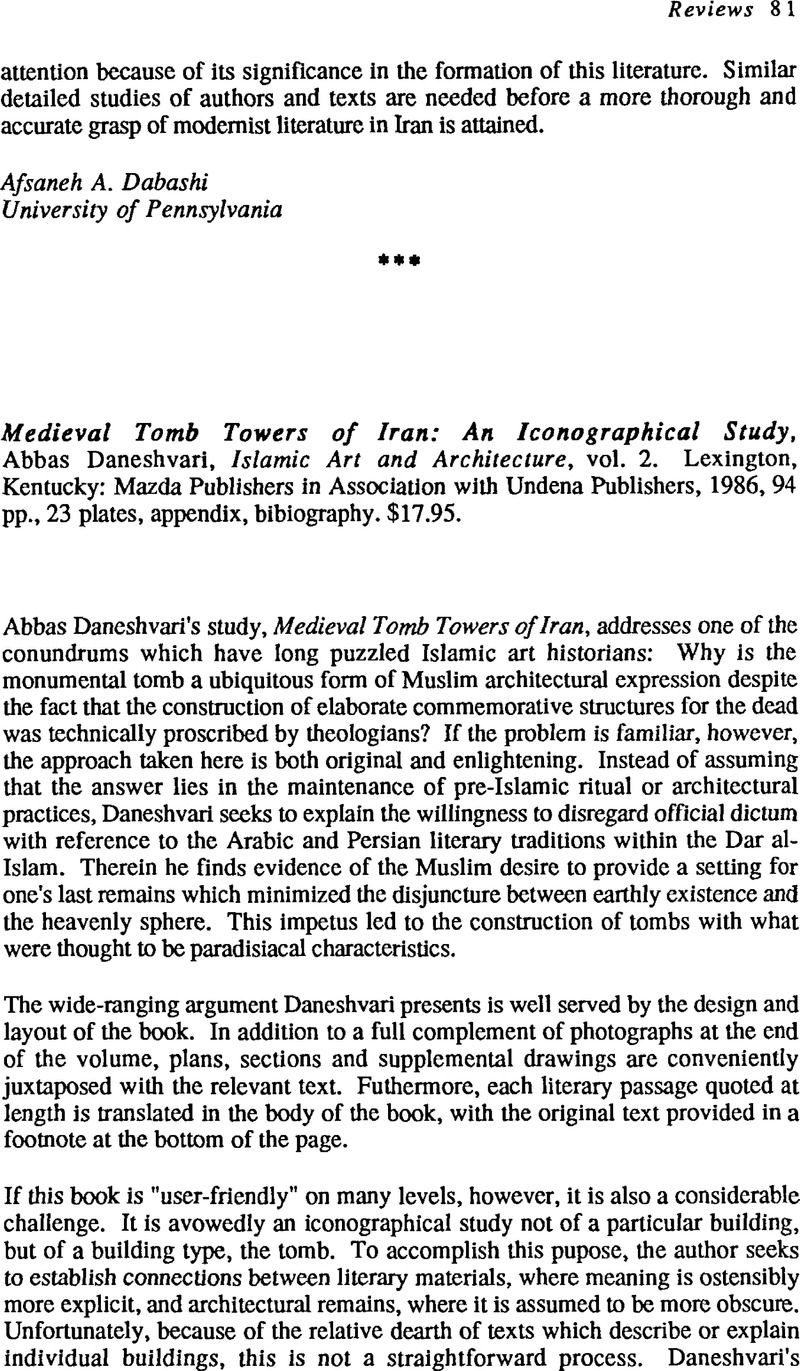No CrossRef data available.
Article contents
Medieval Tomb Towers of Iran: An Iconographical Study, Abbas Daneshvari Islamic Art and Architecture, vol. 2. Lexington, Kentucky: Mazda Publishers in Association with Undena Publishers, 1986, 94 pp., 23 plates, appendix, bibiography. $17.95.
Review products
Published online by Cambridge University Press: 01 January 2022
Abstract

- Type
- Reviews
- Information
- Copyright
- Copyright © Association For Iranian Studies, Inc 1989
References
1 Renata Holod outlines complementary ways in which textual sources can be used to elucidate architectural form in “Defining an Art of Architecture”, in Evin, Ahmet ed., Architectural Education in the Islamic World Today, Geneva, 1986, pp. 26-32.Google Scholar
2 For example, the Alhambra: Grabar, Oleg The Alhambra, Cambridge, 1978, pp. 120-1Google Scholar; on gardens: Moynihan, Elizabeth Paradise as a Garden in Persian and Mughal India, New York, 1979, passim.Google Scholar
3 On this controversial issue contrast Hillenbrand, R. “The Development of Saljuk Mausolea in Iran” in The Art of Iran and Anatolia from the 11th to the 13th Century A.D. (Colloquies on Art and Archeology in Asia, No. 4), London, 1974, p. 43.Google Scholar
4 Hillenbrand, R. “Saljuq Monuments in Iran, II: The ‘Pir’ Mausoleum in Takistan”, Iran, vol. X, 1972, p. 45 and note 6.CrossRefGoogle Scholar




